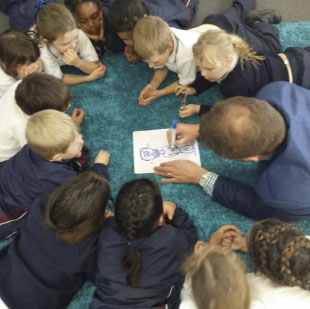 Download a printable copy of this article (PDF 264KB)
Download a printable copy of this article (PDF 264KB)
- Be aware that technology provides a means for students to be bullied at any time.
- View technology as a tool that can be used to bully others,
rather than the cause of the problem. - The motivation behind cyber-bullying is no different from other types of bullying.
- Be actively interested in our students’ online activity.
- Look for the signs of all bullying types and take them seriously.
Monday, it would appear, is the new Friday. In the past, tensions between students may build up during the school week resulting in some nervous Fridays as interactions become somewhat negative, power-laden and frayed. The weekend provided a welcome relief when proximity alone meant that the students couldn’t tease or bully each other. The re-setting or clean slate that Monday provided was welcome to teachers.
But now, students almost universally have access to the online world and the opportunity for respite has disappeared. Worse, the bullying that occurs online is amplified by the availability of an immense audience and also by the real or perceived anonymity that comes with online activity. Students often arrive at school on Mondays not refreshed and reset, but emotional and upset.
“The Internet can be used as a place to have a greater positive impact on the world, There’s a ton of positive initiatives online. The web should be used to inspire others, not spread hate or to hurt others.”
– Justin Bieber
Many schools and teachers have sought to blame and then ban the technology, with little success. The technology in our students’ palms is a tool, and the tool alone is not responsible for the activity. Any tool can be used skilfully for both good and destructive outcomes. The issue is the amplification of the problem that this particular tool enables.
Cyberbullying is really no different from psychological, physical, emotional, verbal or social bullying. Its challenge is that students now have the perfect tool to use destructively. Our work, therefore, is in raising young people who prefer to use this tool positively and artfully, rather than for cruelty and power. This is an enormous test for teachers, but given the emotional angst that many of us are dealing with on Monday mornings following a weekend of online fervour, it is essential to address.
It is imperative for schools and teachers to be mindful of students’ online behaviour. The cloak of anonymity that students may hide behind when perched behind a screen can be further enabled if a school’s attention is applied only to school time online bullying behaviours and parents or carers only to home time online bullying behaviours.
Regardless of when and where the online bullying behaviour is taking place the consequences have the capacity to impact parents, carers and schools. When addressing online bullying behaviours it is therefore vital for schools, parents and carers to work together and to resist being positioned separately. United we stand.
More specifically, there are identifiable ways that schools and teachers can have a positive impact in reducing the frequency, the severity and also the impact of students’ online choices:
- Look for the signs. It is crucial for teachers to be aware of students whose status may have changed. Are particular students being excluded from games, seating arrangements or birthday parties? Are some students raising their hands less? Are students being left out of group work or having their opinions derided? This is especially important in the middle years, when inappropriate online activity statistically peaks.
- Take it seriously. Bullying of any kind is not simply “kids being kids” or a rite of passage. Further, it does not socially inoculate students or toughen them up.
- Resist zero tolerance.
- Talk about it.
- Become conflict experts.
- Focus on relationships.
- Get parents and carers involved.








